Monday, May 17, 2021
ElderHealth in the SPOTLIGHT!
We are pleased to introduce ElderHealth! From advanced care planning to home based primary care, we are here to help. ElderHealth PLLC is a medical practice specializing in providing in-home care to people with memory disorders. Our mission is to support families, improve quality of life, and keep people at home as long as possible. We work with families and caregivers to find ways to deal with behavioral issues without using risky medications.
Our team includes an MD board certified geriatrician, a Nurse Practitioner with extensive work with older adults with memory issues, a Nurse Practitioner certified in palliative care with extensive research in alternative therapies for behavioral issues and a Social Worker certified in palliative care and committed to helping families keep their loved one in the home. Our team also includes a certified music therapist, an art guide and a counselor to add additional support.
Our primary care services are available with a paid annual membership. Our unique advanced care planning services, geriatric consultations, and social services consultations are offered via telehealth without a membership and are generally covered by Medicare. Please visit our website for more information! elderhealthathome.com; 520-829-9987
Share the code "SPOTLIGHT" when you call!
Tuesday, March 2, 2021
Park Senior Villas at La Canada ~ Best in Senior Living!
Occupancy Availability Weekly Update:
Assisted Living: _5______Rooms available
Memory Care: ___5____Rooms available
Behavioral Care: __4____ Rooms available
Independent Living: 1 available 1100 sq ft Casita - $2600/month Promotions:
Lease during the month of March and receive $1000 off the 1st months’ rent and $1000 off the 3rd months’ rent (N/A for ALTCS)
Respite Care through February: $200 off 5 day stay or $300 off 7 day stay.
Assisted Living: _5______Rooms available
Memory Care: ___5____Rooms available
Behavioral Care: __4____ Rooms available
Independent Living: 1 available 1100 sq ft Casita - $2600/month Promotions:
Lease during the month of March and receive $1000 off the 1st months’ rent and $1000 off the 3rd months’ rent (N/A for ALTCS)
Respite Care through February: $200 off 5 day stay or $300 off 7 day stay.
Friday, April 10, 2020
VIKOR SCIENTIFIC Approved Testing for COVID-19
"Vikor Scientific™ is a high
complexity CLIA-certified and CAP-accredited laboratory in Charleston, South
Carolina that has been approved to test for COVID-19 as of 3-23-2020. The
testing will be conducted via the QuantStudio™ 12K Flex Open Array from Thermo
Fisher, which is an industry-leading instrument for PCR testing and has the
capacity for high throughput, allowing Vikor to test a high volume of patients
daily.
Vikor’s testing has a 24-hour
turn-around-time upon sample arrival at the lab and can accurately detect over
40 pathogens known to cause respiratory illness. Just as important, they
have one of the largest antibiotic resistance gene panels on the commercial
market. Our test reports provide quantitative pathogen results, resistance gene
identification and pharmacy guided recommendations. Should any further
assistance be needed, our infectious disease trained PharmDs are available by
phone for personal patient consultations. Test results are faxed and loaded
onto our portal for easy access.
In effort to protect our most
vulnerable population, Vikor Scientific has prioritized offering Respira-ID
with COVID-19 testing to LTC facilities nationwide for all symptomatic or
exposed patients at risk. Vikor has a step-by-step implementation process that
educates the staff on proper collection, completion of the paperwork and
obtaining test results.
It is vital during this time to
remember that while the COVID-19 virus is our most recent and urgent pathogen
invading the United States, there are other significant pathogens that cause
hospitalization and death daily. Vikor’s Chief Scientific Officer, Dr.
Bill W. Massey, urges providers to conduct full panel testing to not only
detect or rule out COVID-19, but to also determine what may be causing the
patient’s symptoms. The causative pathogen could be viral, bacterial, or
co-infection and lead to significant illness, hospitalizations, and death.
To date the coinfection rate for
patients 65 and older who have tested positive for COVID-19 with Vikor has been
76.1% with some patients having up 5 coinfections. The significance of this
data cannot be understated clinically as both the COVID-19 virus and the
coinfection must be treated at the same time. These coinfection leads to
secondary infections which is the main causes of bacterial pneumonia which is
treatable.
Sincerely yours,
Bernie"
Bernie Wahl
Account Manager
(C) 602-499-3673
(F) 602-560-2463
Thursday, April 2, 2020
Downsizing Tips for Baby Boomers
Baby boomers may no longer be the largest demographic group but with 73 million of them, they are the second-largest group of consumers. A big reason why the real estate industry should still be taking heed of baby boomers is that their needs are changing as they transition into retirement.

A Time for Downsizing
Finding the perfect time to downsize isn’t simple. If you’ve recently retired, your new lifestyle takes some time for adjustment. Fortunately, you now have time to make these adjustments exactly the way you want to.
Prioritizing how you will spend your time (leisure, grandkids, travel, etc.) is an important part of making the decision to downsize. However, downsizing is a real estate transaction. Making the best real estate decision can include getting into the market at the right point in time. This includes considering the strength of the market and interest rates. The strength of the market goes through cycles involving lows, growth, highs, and plateaus. This latest cycle has been particularly long. The lows were way back around 2008 to 2011 and growth was vigorous from about 2012 through mid-2018.
Today is a good time to get into the market. The market has more or less plateaued near the highs. Home values are still increasing in value but at a slower pace. Very importantly, interest rates remain near historic lows. It’s mostly a balanced market treating both buyers and sellers fairly.
This is a very good market for people wanting to sell a house to buy another. For people who are downsizing, this is possibly an opportunity to come away from the transaction with a significant amount of cash in your pocket (depending on your personal circumstances). But for baby boomers, your downsizing decision must support your lifestyle goals…
First Consider Your Lifestyle Goals Before Downsizing
You have many options when it comes to downsizing… some you might not have considered. It could be a smaller one-level home, or a 55 and older planned community. Tiny houses are a relatively new option that is possibly preferable to apartment living. Your retirement home doesn’t even have to have a foundation. It could be a houseboat or an RV.
A first consideration is your lifestyle goals…
Leisure lifestyle. There are many senior living communities emphasizing tons of leisure activities. Shared amenities can include tennis courts, walking trails, a golf course, swimming pool, lake access, clubhouse (with scheduled activities), fitness center, and much more. Homes designed with seniors in mind often include a sunroom, chef’s kitchen, RV parking, each bedroom with a separate bath (great for guests), and much more.
Grandchildren. Frequently visiting with grandchildren keeps you active while also staying young at heart. In the right home, you can play games with grandchildren and bring them into your kitchen to teach them family recipes. Something to think about is how a new home will affect your kids and grandkids. Will you have room for everyone to visit? You may want a place with a playground. Almost every senior community welcomes grandchildren to visit although you’ll want to understand any rules before making a commitment.
Travel. Getting out on the road poses its own set of decisions. It could mean a need for RV parking at your home base or it could be making your home-sweet-home near the airport. Another consideration might be that your home is rental-friendly to earn you some extra money while you’re on the road.
What is important to you should be your top concern when choosing where to live.
Tips to Simplify Downsizing
Downsizing can be a big chore after a lifetime of accumulating memorabilia and artifacts. Fortunately, in retirement you have the time to do this methodically over a couple of weeks or months. Begin by separating out the easier to part with items. You probably already have a list in your head of items in the garage and kitchen that you’re willing to let go of. You likely also have at least a partial list of items you want your children, grandchildren, and others to have. These are good lists to start pulling things together.
Move on to rooms with less emotional attachment and rooms that you won’t have in your new home. Most people aren’t too emotionally attached to the laundry room and you may soon have to do without a 4th or 3rd bedroom and basement. A good rule of thumb is only separating things into “keep” or “let go” piles. A “maybe” pile will drag out the process by making you think it through more than once. The exception for having a third pile could be a pile of what you will sell or donate.
But take the time to give each item a moment of your attention. You’ll quickly find you develop a logic to making the decision. Go through each room one at a time. You may find you have a different decision process for each room. You’ll also avoid regrets by giving everything at least a moment of thought.
Items that are easier to get rid of include duplicates and things you haven’t used in a few years or rarely use. That oversized roasting pan that you only use at Christmas might go to a grandchild who can bring it over once a year.
People have collections they find difficult to let go of. Photo albums can be digitized. You can select a few favorite Hummel figurines to keep and sell the rest for a nice roll of dollars. Family members might be interested in at least part of your collection or maybe you can divide it among several relatives.
Be sure your family knows that a big part of your downsizing means letting go of your treasures. Ask them to tell you what they want. Giving away some difficult to part with treasures can still bring you happiness. Giving your son the grandfather clock means you can see him enjoy it now and you can still enjoy it when you visit. You may also learn you have things you didn’t think anyone would want but your granddaughter actually does want your old sewing basket. Pick a weekend to invite the family over for a day to show them what you are letting go and tell a few stories behind your fondest possessions.
One reason to start downsizing early is to give yourself time to reminisce. There’s a reason you’ve saved this stuff all of these years, even if you haven’t looked at it for a long time. Now you have the time and reason to enjoy it again.
Tuesday, March 3, 2020
How To Make A Home More Sustainable
How to Make a Home More Sustainable
The buzz in residential real estate is all about sustainability, and the good news is there are a plethora of ways to improve the efficiency and durability of a home.
Goals change; countertops fabricated from imported granite and showers lined with sprays that endlessly shoot water from head to toe are no longer at the top of all homeowners’ wish lists. Sustainable features are the latest trend to attract buyers. Houses marketed with low-flow toilets and showerheads, multipane windows, electric charging stations, and kitchen countertops made from locally quarried stone are what makes today’s home shoppers swoon.
According to the 2018 National Association of REALTORS® Sustainability Resource Guide, 61% of surveyed members said their clients are interested in sustainability and want more of these features in their homes—and it’s not just millennials requesting them. Almost every age group wants to save money, pare energy and water consumption, and remove toxins from the air they breathe. “Reducing utility bills is often the driver, but many also want to do the right thing,” says architect Tony Schmitz, sustainability director at Hoefer Wysocki, based in Leawood, Kan.
The good news is there are innumerable steps that homeowners can take, and the cost to act sustainably may be modest, adding an extra 5% to 10% to the purchase price, says Prentis Hale, principal at SHED Architecture + Design in Seattle, which has long practiced sustainability. One important caveat to remind clients is that a return on investment may not be immediate, and it hinges on both the cost to buy and install a product or system and the area’s climate.
Here are 10 tips real estate pros can use to advise their sustainable-conscious clients who are looking to purchase or update a home.
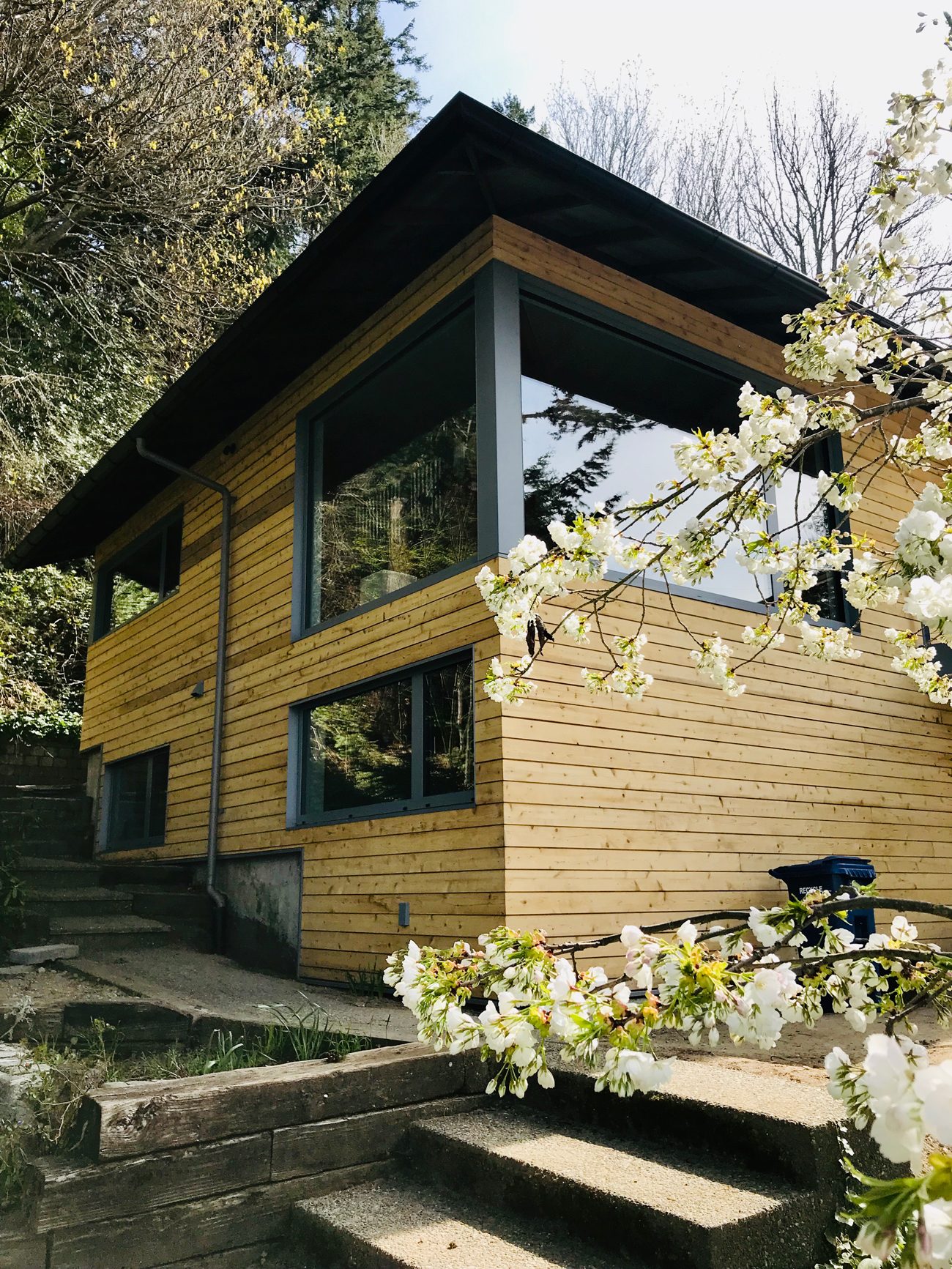 © SHED
© SHED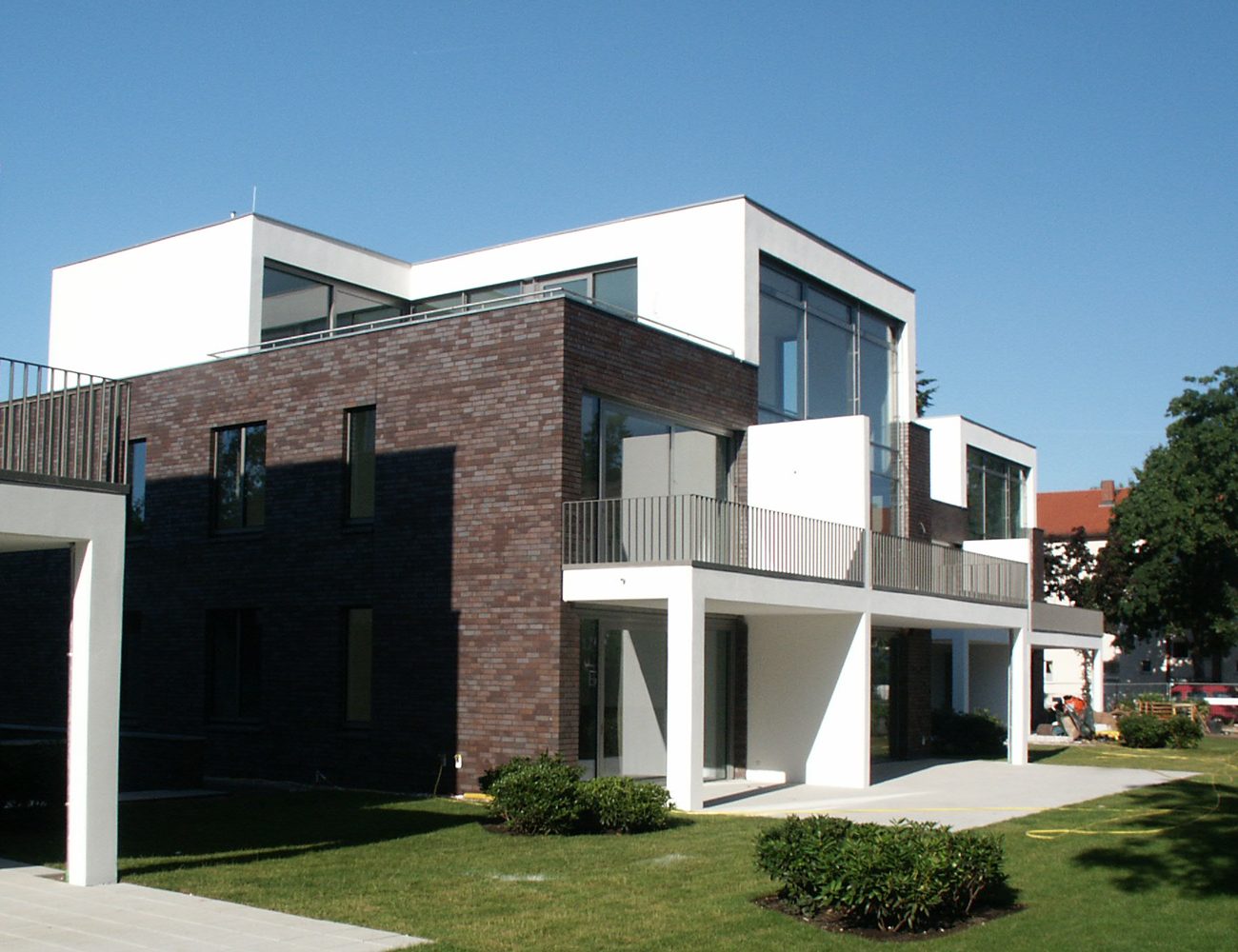 © Steffen Lehmann
© Steffen Lehmann- Insulation and heating. The first step a homeowner should take before making changes to a home is to have an energy audit conducted to gauge the efficiency of the home’s systems, says architect Nathan Kipnis, founder of Kipnis Architecture + Planning in Evanston, Ill. The next steps, based on the audit, would likely be to air seal the house by caulking gaps around windows, doors, and recessed lights. Poorly insulated windows should be replaced with multipane windows. Next up should be improving wall, attic, and basement insulation, based on the R value for the homeowner’s area, Kipnis says. Any home built before 1990 should have an updated heating and cooling system, says Schmitz. Kipnis likes a geothermal ground source heat or air source heat pump, both of which are electric and help to minimize carbon from a building’s energy use. A tight home in a cold climate also should have a heat recovery ventilator to bring in fresh air to keep the home healthy, Kipnis says. A programmable smart thermostat like a Nest is useful to save more energy since it learns a homeowner’s patterns and lowers temperatures when they are away.
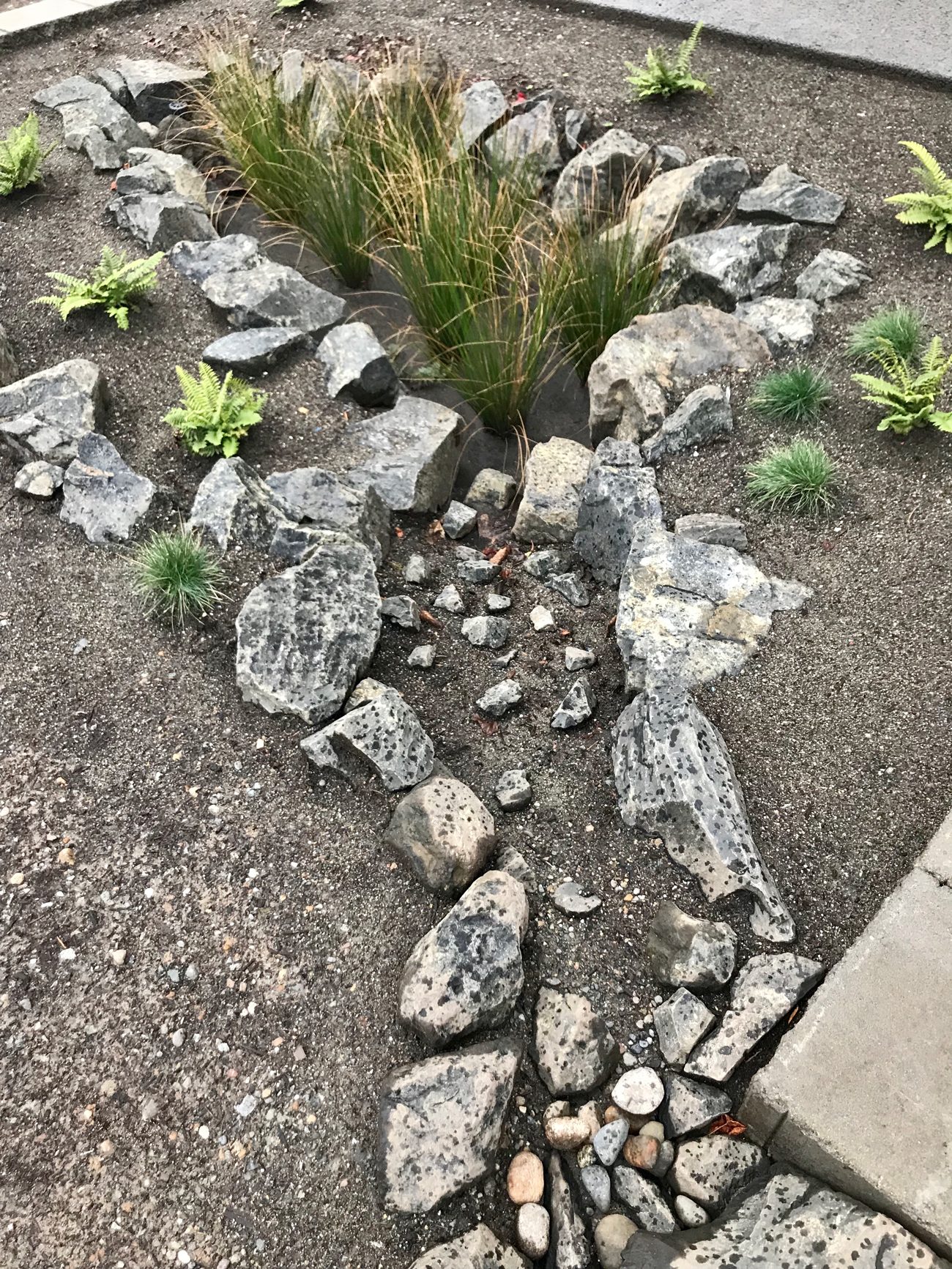 © SHED
© SHED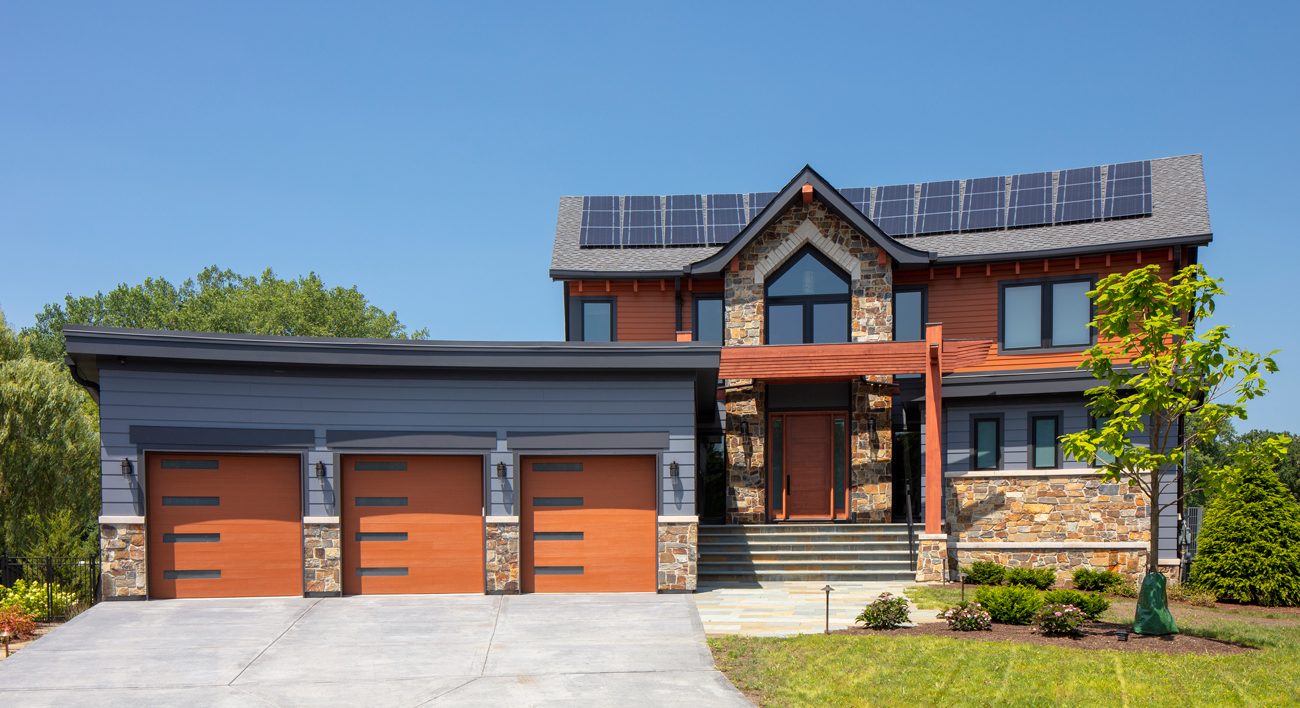 © AJ Brown / Nathan Kipnis, architect, Kipnis Architecture + Planning
© AJ Brown / Nathan Kipnis, architect, Kipnis Architecture + Planning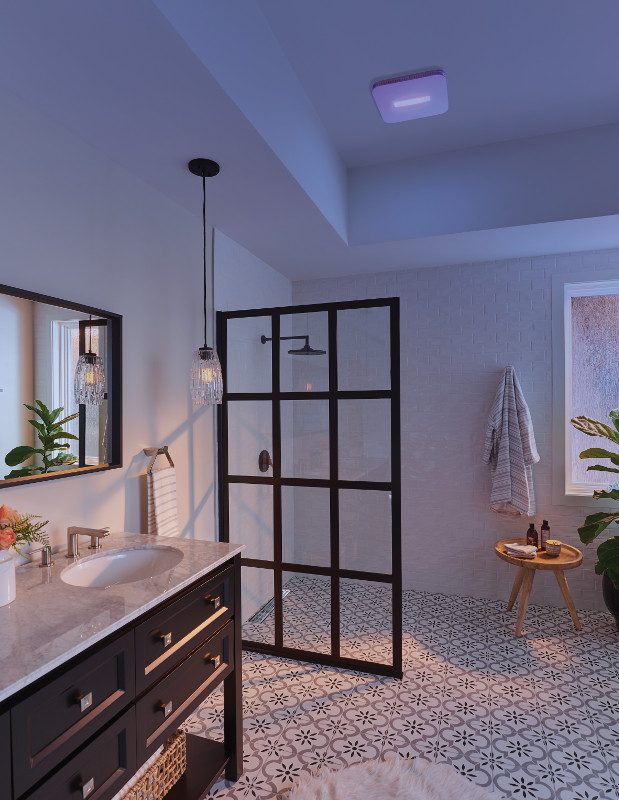 © Ellumi
© Ellumi- Plumbing. Whether it’s a house with many bathrooms or many occupants, water figuratively and literally goes down the drain when people flush toilets, shower, wash dishes, or run the dishwasher frequently. Smart choices include low-flow toilets and showerheads, faucets with aerators, and front-loading washing machines. Schmitz likes tankless water heaters because they heat water on demand rather than continuously, but they require a gas source. Some utility companies offer rebates or incentives when homeowners buy water-saving appliances, so it’s wise for owners look for the EPA WaterSense label or Energy Star certification. Some utilities also offer smart meters and other systems so homeowners can program appliances to start at the least expensive time to use energy, according to the U.S. Department of Energy.
- Nontoxic, natural materials. Air quality also affects sustainability, so it’s smart to make choices that limit volatile organic compounds in paint, carpeting, and adhesives, says Schmitz. When possible, homeowners should also go for natural materials in the home, such as all-wool carpeting, quartz, and reclaimed wood.
- Transportation and walkability. Sustainability isn’t just about a person’s home but also what vehicles they drive and how often they use them. Charging stations have already become a hot amenity in housing, Hale says. But the more a homeowner can walk, bicycle, or take public transportation, the better, says Kipnis. Housing demand is only expected to increase in walkable areas, in both cities and suburbs, according the report Foot Traffic Ahead 2019, from the George Washington University School of Business and Smart Growth America.
- Recycle. Some states offer benefits to homeowners and developers who recycle construction materials during a remodel or teardown, says Kipnis. His state of Illinois is among those that have a deconstruction program in place, offering potential tax benefits associated with donation, revenue from material resale, and reduced waste management costs. There are also private companies that specialize in deconstruction and donation of building materials, such as Recyclean Inc. in Kenosha, Wis. Kipnis cautions that some materials are more recyclable than others (such as glass and metal versus concrete), and some materials are not recyclable if their materials are bound together, including certain countertops that mix aggregates, he says.
Educating the Multifamily Market
Single-family homeowners aren’t the only clients who are interested in sustainability and how to improve a property. Multifamily and commercial building owners are also considering sustainability—and many cities are insisting that the owners of buildings within their borders make improvements to decrease energy use.
For example, New York City began requiring owners of 50,000-square-foot and larger buildings to benchmark their energy use in 2012, and in 2016, broadened the requirement to include 25,000-square-foot buildings and up. This past spring, the city took it a step further by passing the Climate Mobilization Act, making it the first in the nation to put structures of more than 25,000 square feet on notice—come 2024, owners will have to pay a fine if they go over their allotted greenhouse gas emissions set for the building. The caps are determined according to occupancy classification (multifamily, retail, parking, etc.) and the buildings’ square footage for each of those areas.
“The goal for buildings of 25,000 square feet and larger is to reduce energy consumption,” says Kelly Dougherty, director of energy management at FirstService Energy, a subsidiary of FirstService Residential Property Management Company, which has an office in New York. As a result, many owners are making changes to lighting and HVAC systems and shifting to natural gas or electricity versus fossil fuels, says Dougherty, whose company manages a portfolio of 500 apartment buildings in the city, from affordable to super-luxury. She expects other cities will institute similar policies in the coming years.
Going off the Grid
While the overall goal of sustainability is lowering energy consumption and a building’s carbon footprint, some owners are going further by going off the grid completely. In fact, getting off the power grid is becoming easier for homeowners when they select systems such as solar panels with battery storage that help them to produce more energy than they use in a year. In some areas of the country, energy codes have gotten so strict that new houses or substantial remodels must get close to net-zero energy status, says architect Prentis Hale. However, it’s still not realistic for most homeowners to get off the grid completely, says architect Tony Schmitz, especially when it comes to water and sewer grids—cities usually won’t let homeowners disconnect from those due to local health codes.
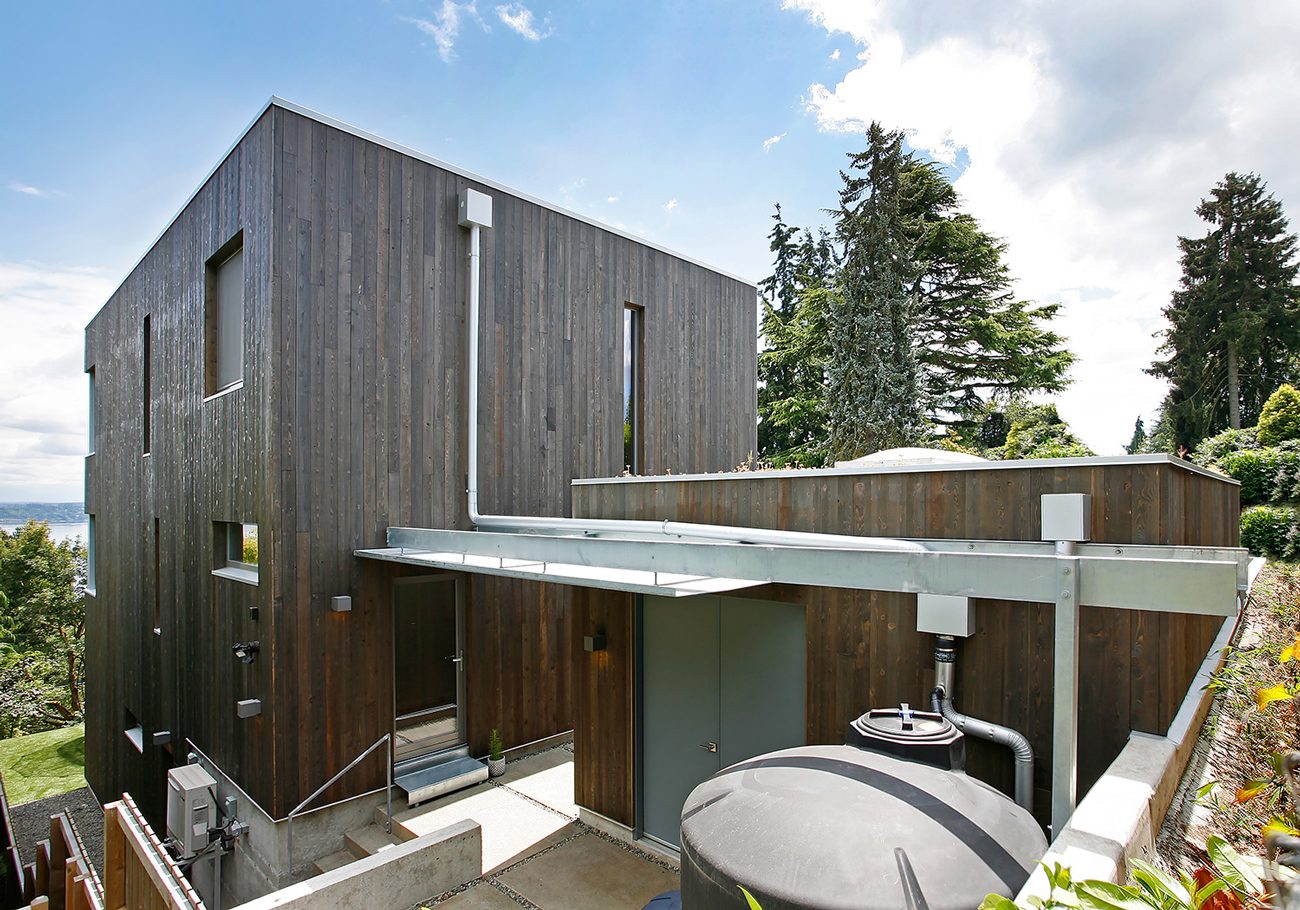
© Mark Woods for SHED
Nick Rosen, author of Off the Grid: Inside the Movement for More Spaces, Less Government, and True Independence in Modern America (Penguin Publishing), calls himself “a part-time off-gridder.” He has a home in London, but he has taken his small house on the island of Majorca in Spain off the grid completely. He’s outfitted the property with solar panels and a rain collection system. His advice for others wanting to do the same is to over provide if budget permits. “Put in a larger water tank than you think you will need, add more solar panels than are strictly necessary, and give yourself a few extra batteries,” he says. “Also, get together with other people in the area who are off-grid. No one person has all the skills and resources.”
3 Critical Steps for Homeowners Eager to Learn About Sustainability
1. Recognize that the most sustainable building is usually the one that exists (depending on condition). “Homeowners should try to reuse and improve an existing home rather than start over,” says architect Steffen Lehmann.
2. Heed those long-touted, simple conservation tips: turn off the lights, don’t let water run endlessly while brushing teeth or showering, and unplug small appliances and turn off the TV when not in use.
3. When a client is considering building new or taking on a major home renovation, advise them to hire professionals who are skilled and knowledgeable in sustainable design. “When interviewing [builders], the homeowners should ask if the person makes sustainable choices when selecting materials, systems, and construction methods,” says architect Tony Schmitz. Look at their website to see if sustainability is a focus. Just as important as what goes into a house is what builders do with waste. What goes into a landfill should be limited, says Marc Spiegel, co-founder and head of construction and demolition for Rubicon Global in Atlanta.
Monday, February 24, 2020
It's A Better Time to Buy Than 10 Years Ago
A strong economy, low unemployment, low mortgage rates, and alluring mortgage rates are making it a great time to buy a home, according to a newly released report from LendingTree, an online financial services marketplace. The amount of income that buyers spent on their mortgage payments also dropped from 2010 through 2019, despite higher home prices.
“If you are in a point in your life where you’re considering buying a home today, it’s a better time to buy than 10 years ago,” Tendayi Kapfidze, LendingTree’s chief economist, told realtor.com®. “If you can get a mortgage, you’re getting much lower interest rates, and it enables you to afford more. But that also means that you’re competing with more buyers, who are bidding up the prices.”
Indeed, median sales prices jumped 53.5% between early 2012 and summer 2019, according to realtor.com®. But a decrease in average mortgage rates—by more than a percentage point from the start of the decade—is helping to offset some of that uptick. Mortgage rates have dropped from 5.09% to 3.74% during that time period. That drop could save borrowers hundreds of dollars a year to tens of thousands over the life of the loan, realtor.com® reports.
Since the Great Recession, borrowers are being more responsible too, Kapfidze says. They’re “much healthier financially than they were 10 years ago,” Kapfidze says. “One reason is because of low mortgage rates. If you refinance, [you can] reduce your monthly mortgage payments.”
Homeowners are also sitting on more equity. In 2012, nationwide equity reached a low of $8.2 trillion. In 2019, it grew to about $18.7 trillion.
Wednesday, February 12, 2020
Subscribe to:
Posts (Atom)






